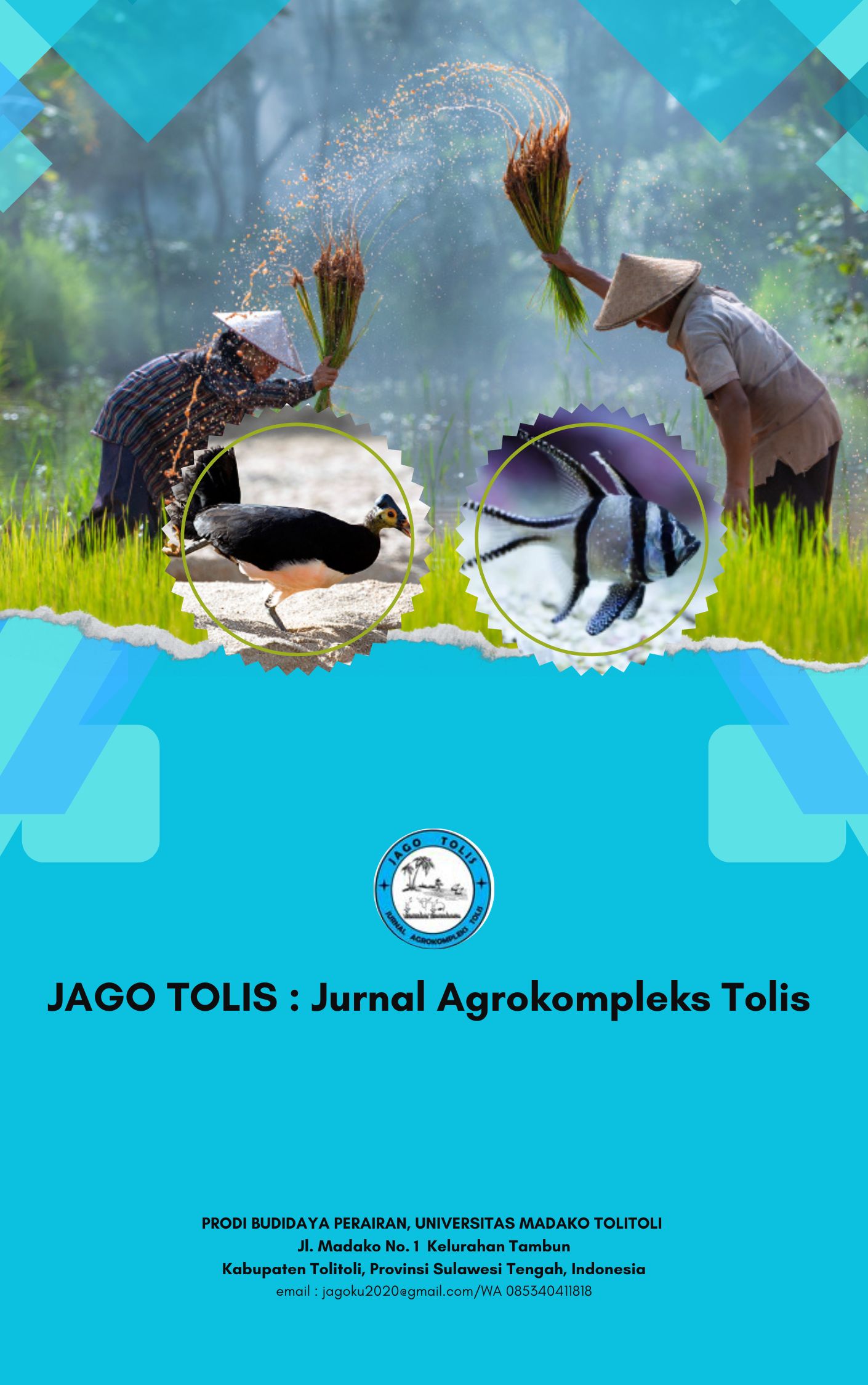Karakteristik Sensori Dan Fitokimia Tempe Berbasis Biji Almond (Prunus dulcis L), Kedelai (Glycine max L) Dan Kacang Hijau (Vigna radiata L)
DOI:
https://doi.org/10.56630/jago.v4i3.613Keywords:
Fermentasi, Kacang Almond, Kacang Hijau, TempeAbstract
Tempe merupakan salah satu produk tradisional Indonesia, pada umumnya terbuat dari kedelai yang difermentasi dengan menggunakan kapang Rhizopus oligosporus. Dalam proses pembuatan tempe terdapat jenis serealia dan legum lain yang juga dapat digunakan, dengan demikian tujuan penelitian ini mengeksplor lebih jauh terkait tempe berbahan dasar almond dan kacang hijau beserta kualitas organoleptik dan kandungan fitokimianya. Hasil penelitian menunjukan bahwa kandungan kimia tempe berbahan dasar kacang almond dan kacang hijau memiliki standart nilai kimia yang sesuai dengan SNI 3144-2015 dimana kandungan air maksimal pada tempe adalah sebesar 65%, kandungan protein minimal 15%. Selain itu tempe berbahan dasar kacang almond dan kacang hijau memiliki kandungan fitokimia yang sama seperti tempe berbahan dasar kedelai positif mengandung alkaloid, flavonoid, tanin dan terpenoid. Secara Organoleptik tempe berbahan dasar kacang hijau mempunyai tingkat mutu sensoris tempe yang tinggi berdasarkan atribut warna, aroma, rasa, tekstur dan secara keseluruhan.
References
Amin, M. N. G. et al., 2020. Identification Of A Novel Umami Peptide In Tempeh. Food Chemistry, pp.1-30. doi.org/10.1016/j.foodchem.2020.127411.
Astuti, M., Meliala, A., Dalais, F. S. & Wahlqvist, M. L., 2000. Tempe, a nutritious and healthy food from Indonesia. Asia Pacific J Clin Nutr, 4(9) doi.org/10.1046/j.1440-6047.2000.00176.x).
Babu, P. D., Bhakyaraj , R. & Vidhyalakshmi, R., 2009. A Low Cost Nutritious Food “Tempehâ€- A Review. World Journal of Dairy & Food Sciences, Volume 4(1), pp. 22-27.
Barus, T., Titarsole, N. . N., Mulyono, N. & Prasasty, V. D. D., 2019. Tempeh Antioxidant Activity Using DPPH Method: Effects of Fermentation, Processing, And Microorganisms. Journal of Food Engineering and Technology, 8(2) pp. 75-80. doi.org/10.32732/jfet.2019.8.2.75.
BSN, 2015. Standar Nasional Indonesia . In: Standar Nasional Indonesia Tempe Kedelai. Indonesia: BNS, p. 2.
Couto, S. R. Ì., M & Sanroma Ì, A. Ì. n., 2006. Application Of Solid-State Fermentation To Food Industry—A Review. Journal of Food Engineering, 76, pp. 291-302. doi:10.1016/j.jfoodeng.2005.05.022).
Dewi, R. S. & Aziz, S., 2011. Isolasi Rhizopus oligosporus Pada Beberapa Inokulum Tempe. Molekul, 6(2) pp. 93 - 104. doi.org/10.20884/1.jm.2011.6.2.97).
Gibbs, B. F., Zougman, A., Masse, R. & Mulligan, C., 2004. Production And Characterization Of Bioactive Peptides From Soy Hydrolysate And Soy-Fermented Food. Food Research International, 32. pp. 123-131. doi:10.1016/j.foodres.2003.09.010.
Graffham, A., Gordon, M., Westby, A. & Owens, J., 1995. Nutrition Of Tempe Moulds. Microbiology, Volume 21, pp. 223-227.
Jelen Ì, H., Majcher, M., Ginja, A. & Kuligowski, M., 2013. Determination Of Compounds Responsible For Tempeh Aroma. Food Chemistry, 141 pp. 459-465. doi.org/10.1016/j.foodchem.2013.03.047).
Kurniawati, S., Lestiani, D. D., Damastuti, E. & Santoso, M., 2019. The selenium content of Tempeh in Indonesia and its potential contribution. Journal of Food Composition and Analysis, 82(103222). pp. 1-6. doi:10.3934/agrfood.2020.2.262).
Kustyawati, M. E., Murhadi, S., Rizal, S. & Astuti, P., 2020. Vitamin B12 Production In Soybean Fermentation For Tempeh. Agriculture and Food, 5(2) pp. 262-271. doi:10.3934/agrfood.2020.2.262.
Manzoor, M. et al., 2021. Role Of Lacto-Fermentations In Reduction Of Antinutrients In Plant-Based Foods. Journal of Applied Biology & Biotechnology, 9(3). pp. 7-16 .doi:10.7324/JABB.2021.9302.
Martins, S. et al., 2011. Bioactive Phenolic Compounds: Production And Extraction By Solid-State Fermentation. A Review. Biotechnology Advances, 29. pp. 365-373. doi:10.1016/j.biotechadv.2011.01.008.
Multari, S., Stewart, D. & Russell, W. R., 2015. Potential Of Fava Bean As Future Protein Supply To Partially Replace Meat Intake In The Human Diet. Comprehensive Reviewsin Food Science and Food Safety, 15. pp. 511-522. doi: 10.1111/1541-4337.12146)
Nout, M. & Kiers, J., 2025. Tempe Fermentation, Innovation And Functionality. Journal of Applied Microbiology, 98. p. 789–805. doi:10.1111/j.1365-2672.2004.02471.x.
Polanowsk, k. et al., 2020. Effect Of Tempe Fermentation By Three Different Strains Of Rhizopus Oligosporus On Nutritional. LWT - Food Science and Technology, Issue doi.org/10.1016/j.lwt.2020.109024.
Puteri, M. D. P. T. G. et al., 2015. Sensory Characteristics Of Seasoning Powders From Overripe. Procedia Chemistry, 14. P. 263 – 269. doi.org/10.1016/j.proche.2015.03.037.
Rahayu, W. P. et al., 2015. Tinjauan Ilmiah Teknologi Pengolahan Tempe Kedelai. Indonesia: PATPI.
Romulo, A. & Surya, R., 2021. Tempe: A traditional fermented food of Indonesia and its health benefits. International Journal of Gastronomy and Food Science, 26(100413).P-1. doi.org/10.1016/j.ijgfs.2021.100413.
















